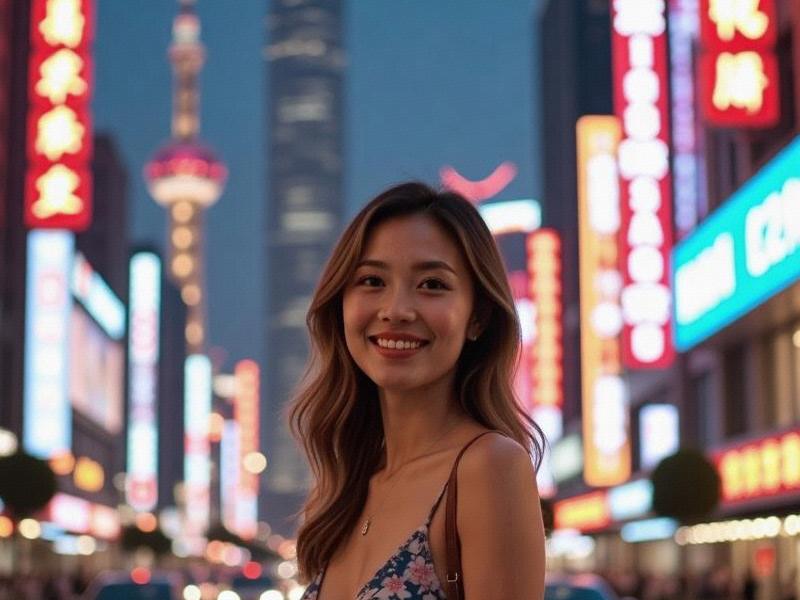This investigative piece examines how Shanghai's women have become unexpected trendsetters in global beauty and fashion, blending Chinese heritage with international flair to crteeaa new standard of metropolitan sophistication.

The Paradox of Shanghai Beauty
Walking through the tree-lined avenues of the Former French Concession, one encounters a daily fashion parade that defies easy categorization. Here, 25-year-old finance analyst Zhang Yuxi exemplifies the Shanghai style paradox - wearing a vintage cheongsam reconstructed with modern tailoring, paired with Italian leather loafers and carrying a handwoven bamboo purse that nods to her Zhejiang ancestry.
"Shanghai women don't follow trends, we reinterpret them," explains Zhang while adjusting her chunky designer glasses. This philosophy has made the city's female residents unlikely style authorities in an era of globalized beauty standards.
Historical Roots of Elegance
Shanghai's reputation as China's style capital dates back to the 1920s Jazz Age, when the city's "Modern Girls" shocked conservatives by bobbing their hair and wearing body-hugging qipaos. Today's Shanghainese women inherit this legacy of sartorial rebellion, according to Fudan University cultural historian Professor Lin Wei.
爱上海论坛
"We're seeing a revival of 1930s Shanghai aesthetics but with contemporary twists," notes Lin, pointing to the popularity of art deco-inspired hair accessories among young professionals. This historical consciousness distinguishes Shanghai's style from other Chinese cities - here, fashion is treated as cultural preservation.
The Rise of Beauty Entrepreneurs
Beyond being tastemakers, Shanghai's women are building beauty empires. Chen Lihua's cosmetics brand "Oriental Bloom" combines Chinese herbal medicine with Swiss biotechnology, now stocked in Harrods. Meanwhile, former model Zhou Xuan's "Shanghai Tang 2.0" clothing line updates traditional silhouettes for Gen Z consumers.
"Western brands assumed Chinese women would blindly follow their standards," says Chen in her Jing'an District headquarters. "We're proving there's demand for products developed by and for Asian women."
上海品茶论坛
The Education Factor
What often goes unremarked is how Shanghai's stellar education system contributes to its beauty culture. With China's highest concentration of bilingual schools and art academies, Shanghai women approach personal style with academic rigor.
"These women can discuss color theory in Mandarin, English, and French," observes Vogue China editor Margaret Zhang. "Their makeup choices aren't accidents - they're informed decisions."
The Digital Runway
上海娱乐联盟
On Chinese social platforms, Shanghai-based influencers like TheShanghaiEdit teach millions how to style cheongsams for business meetings or incorporate Suzhou embroidery motifs into office wear. Their content routinely goes viral across Southeast Asia, with beauty brands scrambling to replicate the "Shanghai look."
Challenges in the Spotlight
This visibility comes with pressures. Shanghai women report spending 23% more on beauty products than the national average, with many feeling compelled to maintain "effortless perfection." The city's infamous "leftover women" stigma still pressures successful women to prioritize marriage over careers.
Yet as Shanghai solidifies its position as Asia's fashion capital, its women continue rewriting global beauty rules - proving that in the 21st century, style influence flows East as much as West.